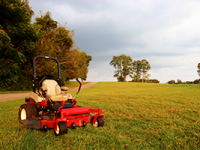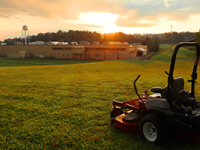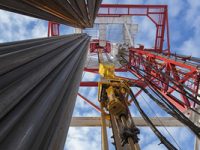Improving Hydraulic Systems for Better Performance and Energy Efficiency
 For a long time, the use of hydraulic power in industrial processes has been associated with its traditional benefits: high power density, precise control, and long-term performance. Yet these advantages typically come hand-in-hand with equal numbers of potential drawbacks: excess noise, heat generation, and inefficient energy allocation. As we move forward, technologically advanced industrial equipment now requires hydraulic systems that can provide quieter, more economical and more efficient solutions.
For a long time, the use of hydraulic power in industrial processes has been associated with its traditional benefits: high power density, precise control, and long-term performance. Yet these advantages typically come hand-in-hand with equal numbers of potential drawbacks: excess noise, heat generation, and inefficient energy allocation. As we move forward, technologically advanced industrial equipment now requires hydraulic systems that can provide quieter, more economical and more efficient solutions.
Where wasted energy and resulting carbon emissions might have previously been seen as inconsequential, a switch to a tightly-modulated hydraulic system fitted for specific tasks is essential in today’s globally competitive and eco-conscious economy. With various industrial machinery (including die casting machines, presses and plastic injection moulding machinery) placing different demands on hydraulic control, you may wonder: how can highly complex hydraulics systems be adapted for individual requirements?
Matching optimum performance to size requirements
Taking one application example into consideration – injection moulding machinery (used in rubber, thermoplastic and other polymer industries); Parker has developed an immersed servo motor pump system with the aim of enhancing hydraulic reliability and reducing energy consumption. Hydraulics have long been utilised in this industrial process; with a hydraulic power unit (HPU) as the source and with very large capacity pumps and motors to ensure steady performance. However, Parker’s solution brings in three separate elements (a pump, a servo motor and a drive for control) to match flow rate to the particular requirement, primarily through the rotational speed of the motor.
From opening and closing moulds to plasticising and injecting, there are many auxiliary movements – often occurring in parallel – that take place within plastics machinery. They must be supplied centrally with the required flow and pressure over the briefest of cycle times. Controlled by the speed and torque of servo motor as part of Parker’s solution, careful flow and pressure regulation allows for greater energy efficiency. With the high maximum speed of the small vane pump, a very high volume flow can be achieved with the smallest size. Therefore, component size can be optimised to suit their need and investment costs reduced.
Selecting a complete solution
 Alongside hydraulic systems available for injection moulding machinery, Parker offers a full-system solution, the Drive Controlled Pump (DCP), which combines a versatile range of AC drive controllers, motors and pumps into tailored packages for the most diverse applications. With the incorporation of an alternating current drive controller, the speed range can be set in advance to a predefined cycle. Whether for a long or short duty cycle, the precise amount of hydraulic power required can be calculated for any particular point in time. When selecting between vane pumps or axial piston pumps, factors of output, required minimum and maximum speeds can be assessed and taken into consideration.
Alongside hydraulic systems available for injection moulding machinery, Parker offers a full-system solution, the Drive Controlled Pump (DCP), which combines a versatile range of AC drive controllers, motors and pumps into tailored packages for the most diverse applications. With the incorporation of an alternating current drive controller, the speed range can be set in advance to a predefined cycle. Whether for a long or short duty cycle, the precise amount of hydraulic power required can be calculated for any particular point in time. When selecting between vane pumps or axial piston pumps, factors of output, required minimum and maximum speeds can be assessed and taken into consideration.
Parker’s DriveCreator dimensioning software tool enables the creation of an energy-efficient, speed-controlled, electrohydraulic DCP solution, while its start-up tool simplifies the task of putting the DCP into operation once selected. To discover more about recommended combinations of individual components, please click here.
 This article was contributed by Vincent Sinot, key account manager, Parker Sales Company France.
This article was contributed by Vincent Sinot, key account manager, Parker Sales Company France.
Related articles:
How Variable Speed Drives Become Simpler and More Efficient
The Hydraulic Solution for the Evolution of Electric Drives
Ten Dos and Don’ts of Applying Variable Speed Drives to Hydraulic Pumps
Une technologie innovante de servo motopompe pour des presses à injecter moins énergivores
Source: Parker Feed




